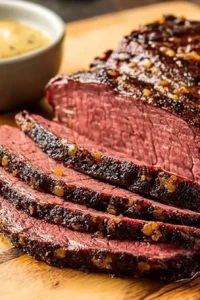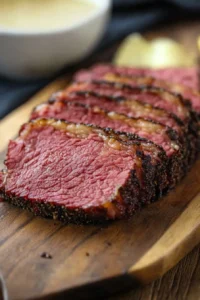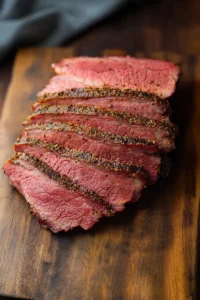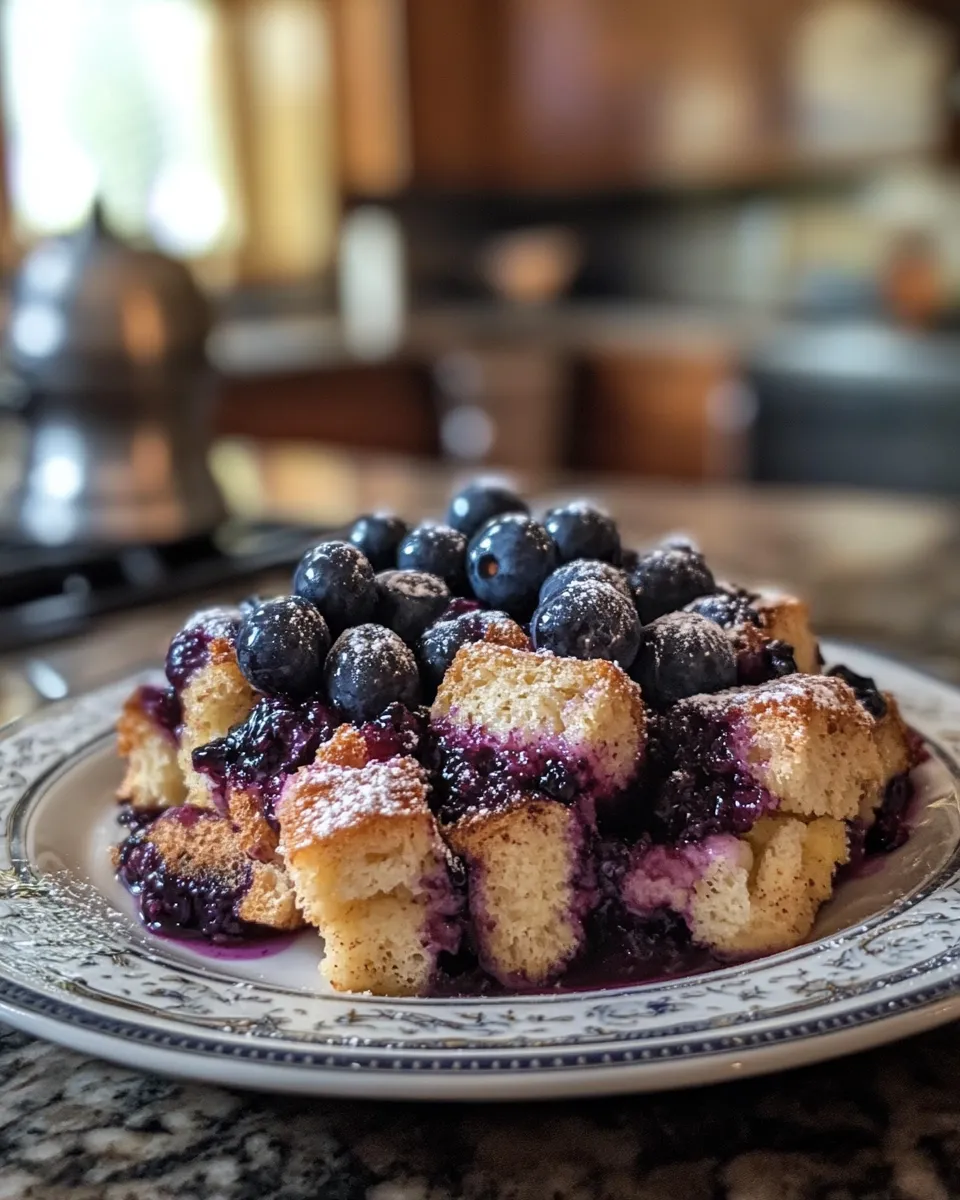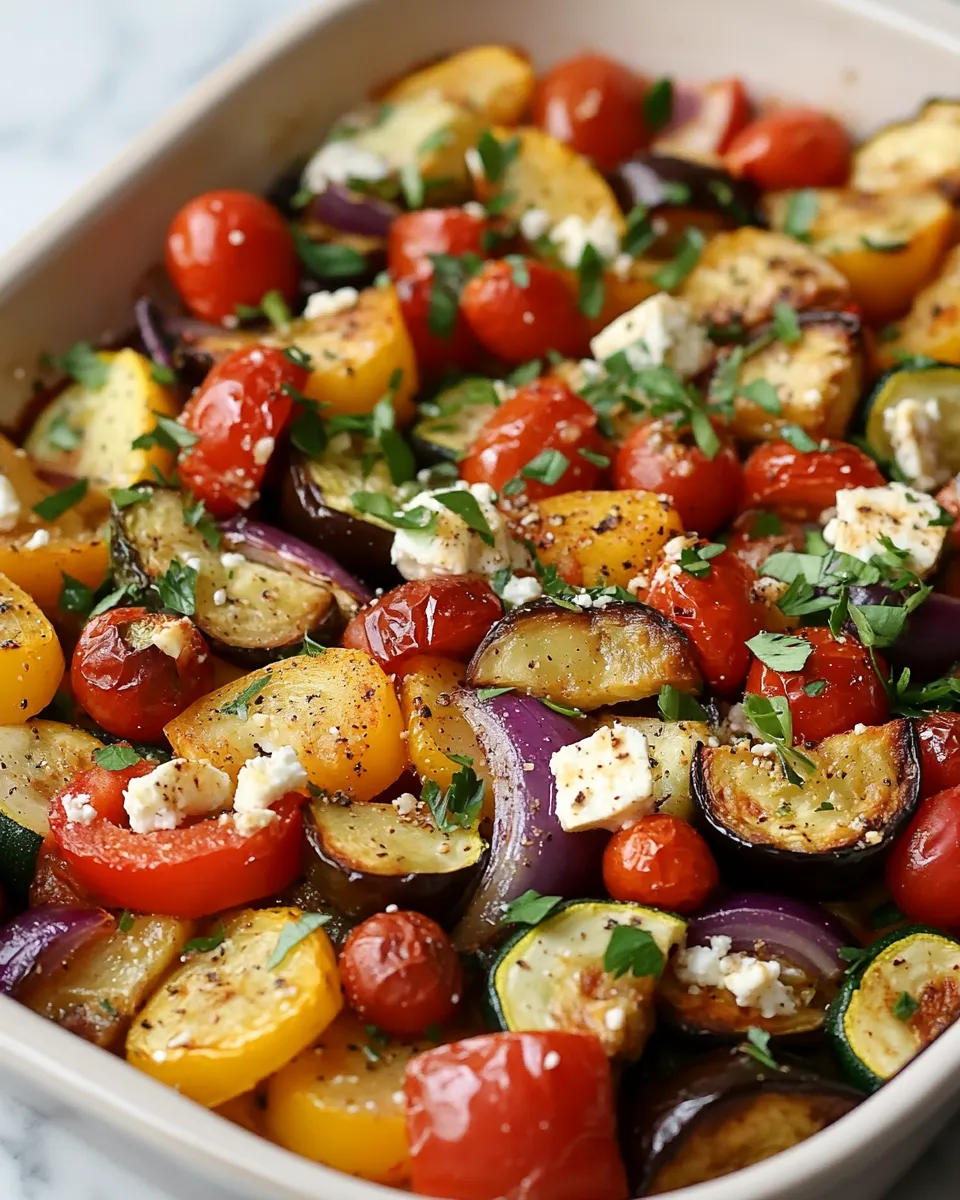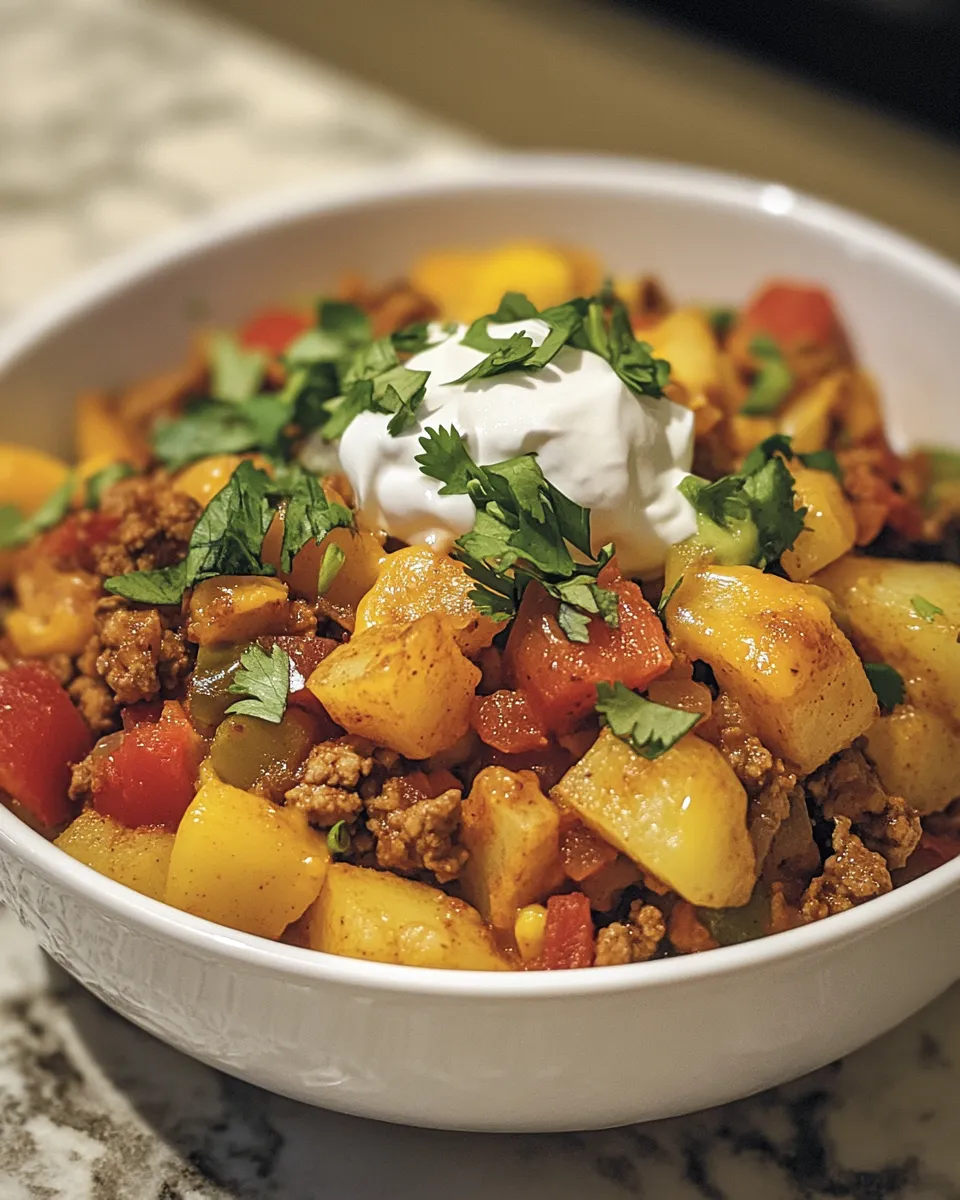Why You’ll Love Smoked Corned Beef
Now let me tell you something about smoked corned beef—it’s not just dinner, it’s an experience. There’s a depth to it, a kind of richness you don’t get from your everyday roast or stew. When that brined brisket hits the smoker and the scent of hickory or applewood starts swirling through the air, it’s like your backyard turns into a little slice of heaven.
What makes it so special? Well, for starters, it’s got layers—flavor that builds low and slow, whispering its way through every bite. The smoke wraps around the meat like a warm blanket, giving it a bark that’s just the right kind of crispy, while the inside stays melt-in-your-mouth tender. It’s the kind of thing you slice into and folks go quiet around the table—not because they’ve got nothing to say, but because they’re too busy going back for seconds.
This isn’t your typical St. Paddy’s Day fare either. It’s comfort food with a little edge, the kind of dish that works just as well for a casual Sunday supper as it does for a special get-together. And the leftovers? Oh honey, don’t even get me started. Stack it high on rye with a smear of mustard or toss it in a skillet with potatoes the next morning—either way, you’ve got yourself something worth savoring.
If you’re someone who appreciates a meal that takes its time, that rewards patience with bold, honest flavor, then smoked corned beef is about to become your new favorite. It’s not fancy, but it is unforgettable—and around here, that’s what good cooking is all about.
Ingredients You’ll Need
Before we get that smoker going, let’s round up everything you’ll need. Nothing fancy here—just honest, everyday ingredients that come together to make something truly special.
-
1 (3–4 pound) corned beef brisket, point or flat cut — You’ll find it in the meat section already brined, usually with a little seasoning packet tucked in. Don’t toss it—we’ll use that!
-
2 tablespoons yellow mustard — This acts like glue for the rub, and don’t worry, you won’t taste it much. It just helps everything stick and adds a whisper of tang.
-
1 tablespoon brown sugar — A little sweetness goes a long way, especially when it caramelizes out on the smoker.
-
2 teaspoons black pepper — Freshly cracked if you can; it adds that sharp backbone to balance the salty meat.
-
1 teaspoon garlic powder — For that subtle earthy warmth that plays well with smoke.
-
1 teaspoon onion powder — Another layer of savory, because we’re building flavor here, not just heat.
-
½ teaspoon smoked paprika — Optional, but I like the way it leans into that smoky profile we’re chasing.
-
Wood chips or chunks for smoking — Hickory, cherry, or applewood are my go-tos. Each brings its own character, kind of like your favorite cast iron skillet—seasoned with stories.
That’s it—simple, sturdy ingredients that don’t ask much from you but give back tenfold in taste. You don’t need a spice cabinet full of things you can’t pronounce—just a few pantry staples, some patience, and a good cut of meat. Let’s get that smoker ready and let time do its thing.
Tools and Equipment
You don’t need a fancy setup or a chef’s kitchen to make smoked corned beef—just a few trusty tools and a little backyard spirit. Here’s what I use when I’m fixing up a brisket that’ll have folks hanging around the smoker, peeking under the lid like kids at Christmas.
-
Smoker — Whether it’s a pellet grill, an offset smoker, or even a charcoal kettle with a little smoke box, any setup that lets you cook low and slow with wood smoke will do the trick. Don’t overthink it—use what you’ve got and know how to use.
-
Meat thermometer — A good digital one is worth its weight in gold. You want to know exactly when that brisket hits the sweet spot (usually around 195–205°F for that perfect tenderness).
-
Wood chips or chunks — Pick your favorite: hickory for boldness, applewood for something a little sweeter, or cherry for a touch of fruitiness. Soak them if your smoker calls for it.
-
Cutting board — Big enough to rest and slice your brisket without juices running all over the counter. Bonus points if it’s got a groove to catch the good stuff.
-
Sharp carving knife — This isn’t the time for a dull blade. A good, long slicer will help you get nice, even slices without shredding that beautiful bark.
-
Foil or butcher paper — For wrapping your brisket partway through if it’s getting too dark or drying out. I usually lean toward pink butcher paper—it lets the smoke in but keeps things tender.
-
Tongs and heatproof gloves — Because that brisket’s going to be hot and heavy, and you don’t want to wrestle it bare-handed.
That’s the short list. No gadgets, no gimmicks—just the right gear to help you coax every bit of flavor from that beautiful brisket. Around here, it’s not about having the newest tools—it’s about knowing how to use the ones that’ve stood the test of time.
How to Smoke Corned Beef
Smoking corned beef isn’t complicated, but it is a bit of a process. The good news? Most of it is hands-off, and the payoff is well worth the wait. Here’s how I do it, one slow, savory step at a time.
Step 1: Soak the Corned Beef (Optional)
First things first—check how salty that brisket is. Most store-bought corned beef comes pretty heavily brined, which means it can lean a little salty once smoked. If you’ve got the time, go ahead and soak the brisket in a big bowl of cold water for 4 to 8 hours (or overnight in the fridge). This helps draw out some of that excess salt and gives you a cleaner slate for seasoning. Totally optional—but worth doing if you’ve got the time.
Step 2: Apply a Dry Rub
Once the meat’s been soaked (or if you’re skipping that step), pat it dry with paper towels. Really get in there—you want it nice and dry so the rub sticks well. Then slather it with a little yellow mustard. It’s not about flavor here—it’s just glue for the spices.
Now for the rub. Mix together your brown sugar, pepper, garlic powder, onion powder, and paprika. Sprinkle it on generously, pressing it into the meat like you mean it. Don’t forget the edges—flavor belongs on every bite.
Step 3: Preheat Your Smoker
Fire up your smoker and get it holding steady around 225°F. That’s the sweet spot for low-and-slow cooking. Add your wood—hickory, apple, cherry, whatever speaks to you—and let it start rolling that beautiful, blue smoke. The kind that smells like something special is about to happen.
Step 4: Smoke the Corned Beef
Place the brisket right on the smoker grates, fat side up if there’s a thicker cap. Close the lid and don’t peek too much—every time you open it, you lose heat and smoke. Let it go for about 3 to 4 hours, or until it hits around 160°F internally.
By now, that bark should be setting up nicely and your yard probably smells better than any restaurant in town.
Step 5: Wrap and Finish
Once it hits that 160°F mark, it’s time to wrap. Use foil or pink butcher paper to snugly wrap the brisket—this helps push it through the “stall” (that part where it just won’t seem to climb in temp). Pop it back in the smoker and keep cooking until the internal temp hits between 195°F and 205°F.
That’s when it gets tender—like slice-it-with-a-butter-knife tender.
Step 6: Rest and Slice
When it’s done, don’t slice it right away. Let it rest, still wrapped, for at least 30 minutes—an hour is even better. This gives the juices time to settle back into the meat, so every slice is juicy and flavorful.
Once rested, slice against the grain into thin strips. If you’re not sure which way the grain runs, take a close look before wrapping—it’s easier to see when the meat’s raw.
Now serve it up however you like—piled high on a sandwich, next to roasted potatoes, or straight off the board with a fork and no shame.
Tips for Perfect Smoked Corned Beef
Now, I’ve made enough smoked corned beef to know that the difference between good and unforgettable usually comes down to the little things. Here are a few tips I’ve picked up along the way—lessons learned from trial, error, and a few hungry family members waiting by the smoker.
Don’t Skip the Soak (If You’ve Got the Time)
Corned beef is cured in a salt-heavy brine, and while that’s part of what gives it its flavor, it can be overpowering if you go straight to smoking. A good soak in cold water helps mellow things out and gives you more control over the final flavor. Think of it as rinsing off the extra noise so the real music can shine.
Let the Rub Set In
Once you’ve got the rub on, don’t rush it straight to the smoker. Let it sit for 15–30 minutes while you get the smoker going. It gives the seasoning a chance to settle into the meat and form a good crust once it hits the heat.
Watch the Temperature, Not the Clock
Every piece of meat has a mind of its own. Some briskets hit 160°F in three hours, some take five. Don’t panic. Just trust your thermometer more than your watch, and don’t pull it off the heat until it’s good and ready—around 195–205°F for that perfect tenderness.
Wrap It When the Bark Is Right
That dark, flavorful crust we call the “bark” is one of the best parts. You want to wrap the brisket once the bark is firm and the internal temp stalls. Wrapping too early can make the crust soggy, while waiting too long can dry it out. It’s a dance—but once you’ve done it a few times, you’ll know the rhythm.
Let It Rest—Seriously
It’s tempting to dive in the second it’s done, but resting is where the magic happens. Those juices you worked so hard for need time to redistribute. Slice too soon, and you’ll watch them run all over the cutting board instead of staying in your meat.
Slice Against the Grain
Take a second and find the direction of the muscle fibers before you slice. Cutting against the grain shortens those fibers and gives you tender, easy-to-chew bites. Go the wrong way and even perfectly cooked meat can feel tough.
Don’t Be Afraid of Leftovers
Smoked corned beef only gets better the next day. Toss it in a skillet for breakfast hash, make a grilled Reuben, or just warm it up and enjoy it again. It’s one of those things that keeps on giving.
Smoking corned beef isn’t a race—it’s more like a quiet afternoon spent doing something meaningful. Keep it simple, take your time, and trust your senses. The smell of that smoky brisket wafting through the yard? That’s your reward for doing it right.


